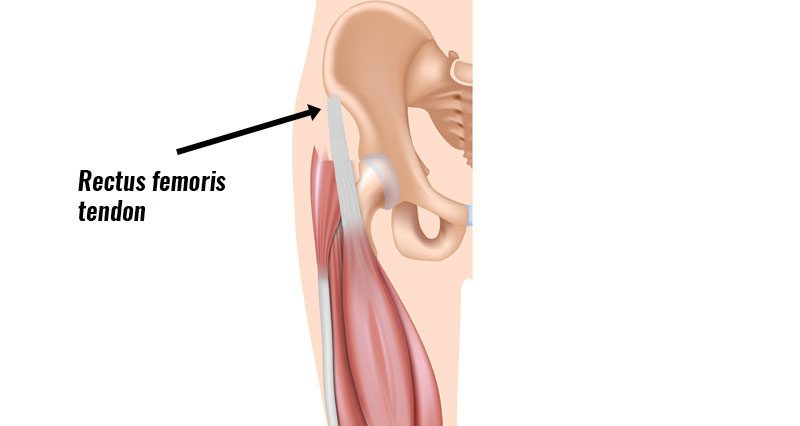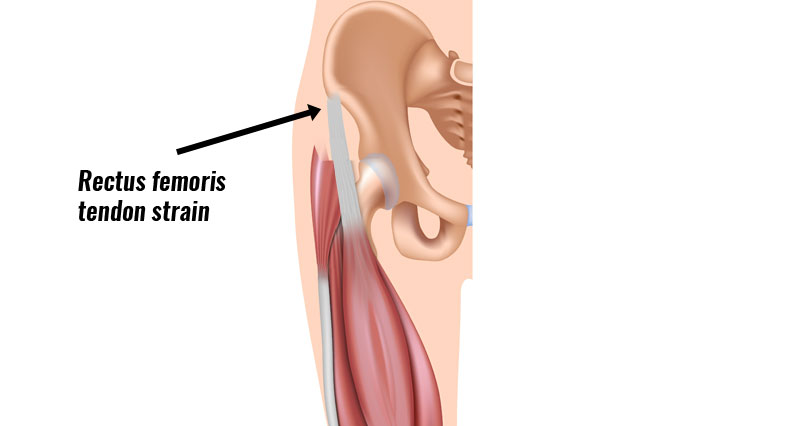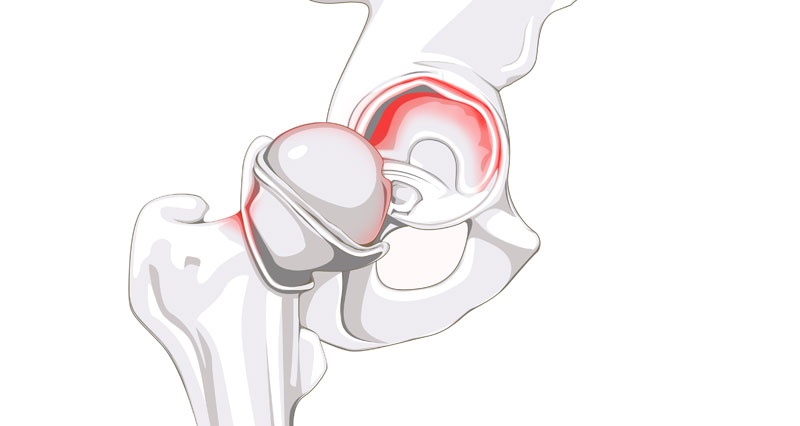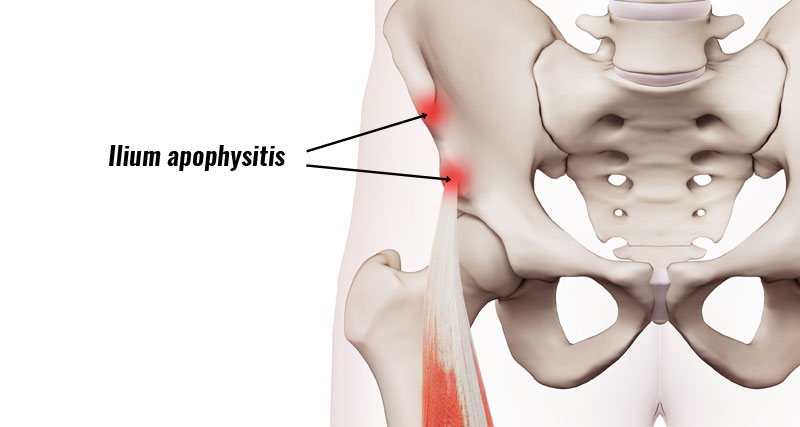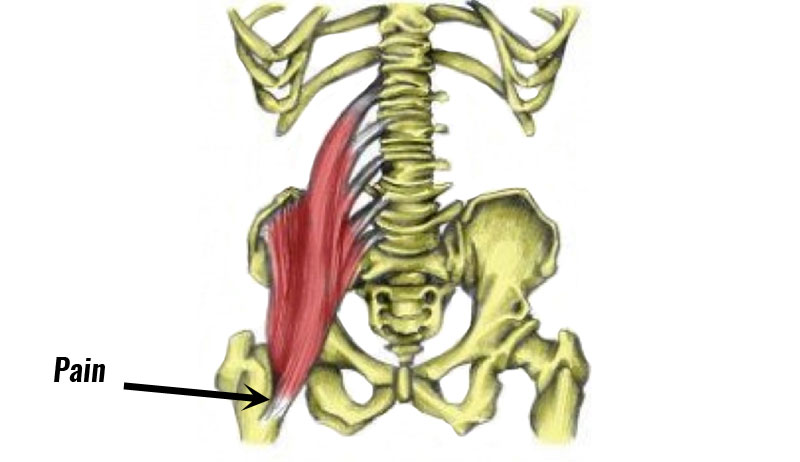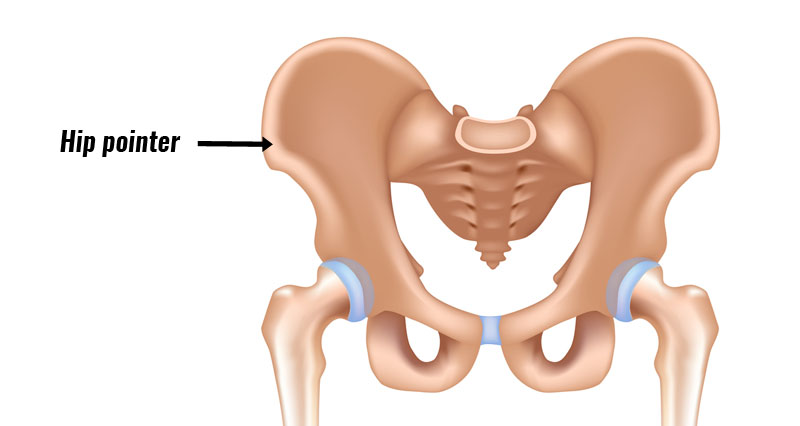Rectus femoris tendinopathy causes pain at the front of the hip, at the point where the large central quadriceps muscle attaches to the pelvis. It may occur through overuse or following a tendon strain that fails to heal properly.
Symptoms
Symptoms include:
- Gradual onset pain and tenderness at the front of the hip.
- Performing a straight leg raise, or lifting your knee against resistance reproduces symptoms.
- Pain and stiffness first thing in the morning, or after a rest period.
Anatomy
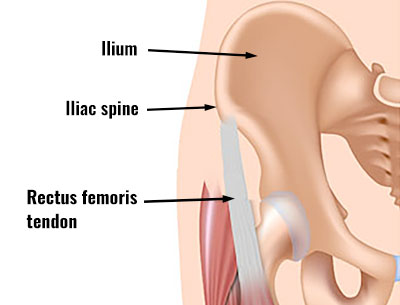
The rectus femoris is the large quadriceps muscle running down the middle of the front of the thigh. It originates at the front of the pelvis (anterior inferior iliac spine) and inserts at the top of the patella.
The rectus femoris crosses two joints; both the hip joint and the knee joint (called a biaxial muscle). Its function is to lift up the knee (hip flexion) and straighten the leg (knee extension).
What is rectus femoris tendinopathy?
Pain develops gradually over a period of days or even weeks and is normally located at the front of the hip. In the past, it was thought inflammation causes many tendon injuries. Hence the term tendonitis (itis means inflammation).
However, studies show acute inflammatory cells are not present. Therefore the term tendinopathy is more appropriate. Tendinopathy describes a range of conditions that affect the tendon.
Causes
Overuse is the primary cause. Over time degenerative changes (wear and tear) occur in the tendon.
Treatment
Immediate first aid is to rest and apply ice/cold therapy.
Cold therapy
Apply ice or cold therapy for 10 minutes every hour initially to help with the pain. Reduce frequency as symptoms improve. Do not apply ice directly to the skin as it may burn. Wrap in a wet tea towel, or use a cold therapy compression wrap.
Rest
Rest completely until normal daily activities are pain-free. In particular, avoid anything which makes your symptoms worse. Then active rest is more appropriate. Maintain fitness by cycling if done pain-free.
Medication
A doctor may prescribe anti-inflammatory medication e.g. ibuprofen to reduce pain and inflammation.
Electrotherapy
Your physio may use ultrasound or laser treatment with sports massage to aid the healing process.
Exercises
A full hip and groin rehabilitation program is important to avoid re-injury.
